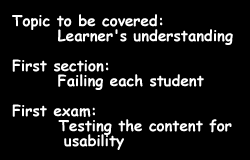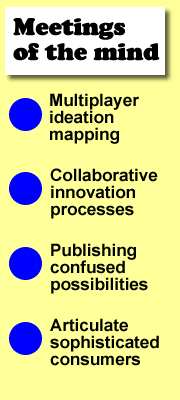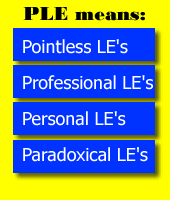I've known about Facebook for a long while without being curious about it. When I read last month that outside developers could now create new widgets/API's for Facebook subscribers, I still had no questions. When I read recently that nearly all college students are now on Facebook, I got a sense I would be looking into this soon. Then some of the bloggers I subscribe to started exploring Facebook last week. Now I have new questions to explore. Particular people were investigating personal questions. I learned my new questions socially.
First, Cammie Bean wrote Getting Psyched for Facebook which got me wondering about the differences between Facebook and blogging for professional development. Then Michele Martin wrote Facebook, MySpace and Class Divisions. She gave me questions about the harm of the digital divide, depriving others of access and benefits, and elitism inherent in the enrollment. Dan Roddy added to my questions with Facebook How? Why?. Dan's satisfaction and amazement with connecting to his established friends in this new way -- made me more curious about the value of Facebook to those who are getting into it without hesitation. Dan also asked some fabulous questions about "so-net" software getting applied to the development and dissemination of training. Dan linked to a zdnet article which clarified some questions in my mind about the entrepreneurs launching ventures through widgets in Facebook.
Wendy Wickham then shared her anxieties in Fiddling with Facebook. Wendy helped me question how Facebook serves those in college, and recently graduated, differently from mid career professionals. She also raised questions in my mind about the differences with LinkedIn and the concept of "friends" that Facebook is based upon. Yesterday Jon at Education Revolution posted SLDS: An Acronym this time which exuded his excitement about the viral potential of Facebook to disseminate education, to equalize access and to make educators scalable. Cammie then posted links to her podcast interview with Kineo's Stephen Walsh.
All this is an example of "life is my PLE". Not much value occurs to me by learning about announcements of products, changes and data. Lots comes from people who are pondering personal questions. I'm thrilled that the questions I'm using are changing, improving, and evolving from this process. I'm not focused on the sources of expertise in my PLE, I'm dwelling on the benefits that emerge from them. I'm not locked into a long term exploration of "Facebook" that would set up subscribed searches, a wiki of resources or even a blog category. I'm exploring Facebook provisionally. The impromptu nature of this is as appealing to me as the learning that's emerging from the social fabric of us.









